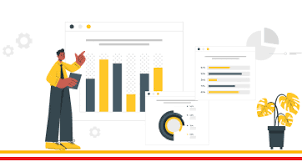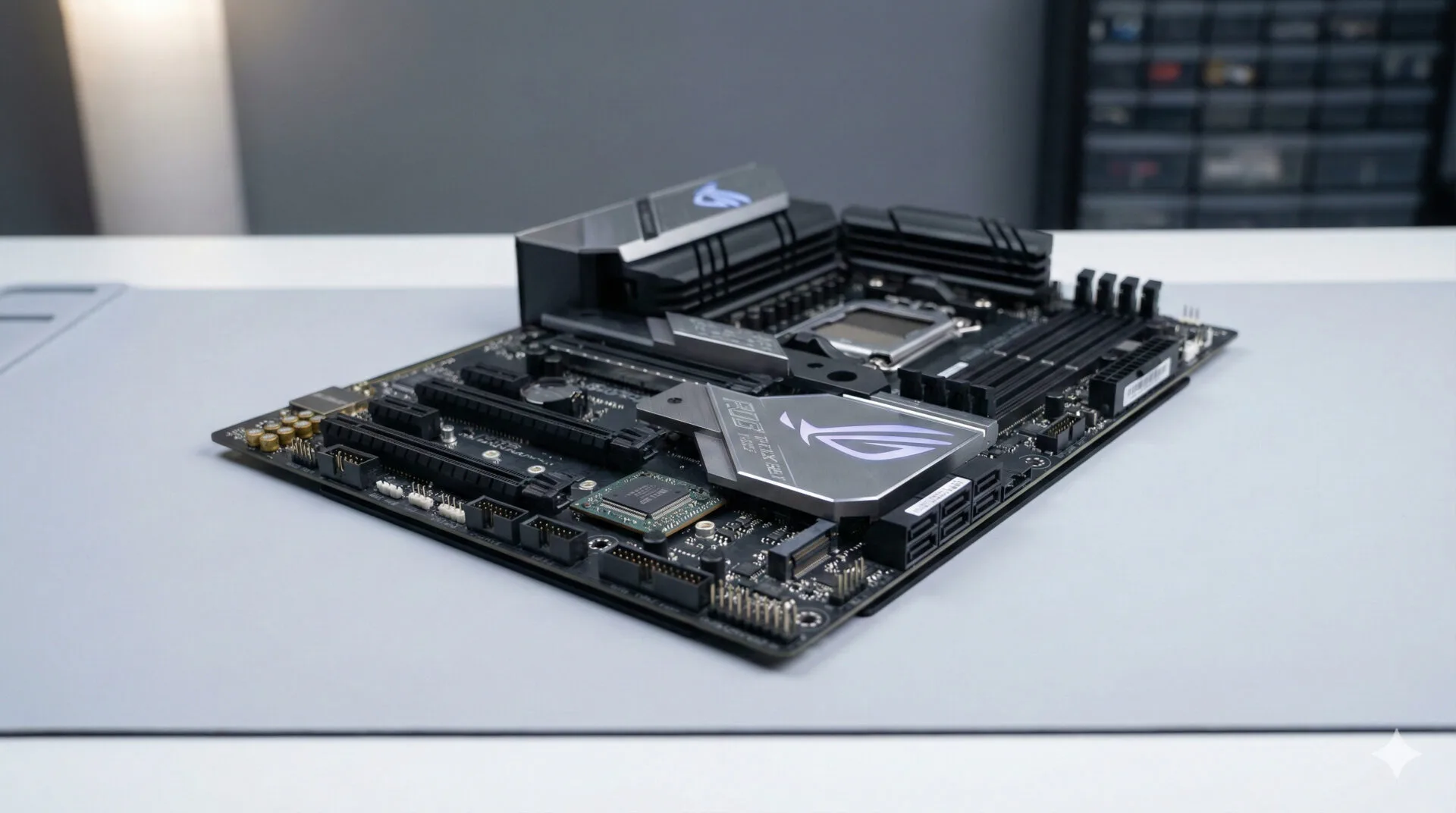Introduction
Artificial Intelligence (AI) and Data Analytics are two of the most transformative technologies in today’s digital age. AI refers to the development of systems capable of performing tasks that normally require human intelligence, while Data Analytics involves the process of analyzing raw data to uncover patterns, trends, and insights. The convergence of these two fields has revolutionized how organizations process and utilize data, driving innovation and efficiency across industries.
In this article, we will explore how AI is advancing data analytics, discussing key technologies, practical applications, ethical considerations, and future trends. We will also delve into expert insights and case studies to provide a comprehensive understanding of this rapidly evolving domain.
Historical Context
Evolution of Data Analytics
Data Analytics has evolved significantly from simple statistical analysis to complex algorithms capable of making autonomous decisions. Initially, data analytics was used primarily for descriptive purposes, analyzing past data to understand what happened and why. Over time, with the advent of more sophisticated tools and techniques, predictive analytics emerged, enabling businesses to forecast future trends and outcomes.
Early Uses of AI in Data Analytics
The integration of AI into data analytics began in the late 20th century, with the development of machine learning algorithms that could process vast amounts of data more efficiently than traditional methods. Early AI applications in data analytics were limited to specific tasks, such as fraud detection and customer segmentation. However, as AI technology advanced, its role in data analytics expanded, leading to more dynamic and accurate analytical models.
Key AI Technologies in Data Analytics
Machine Learning
Machine Learning (ML) is a subset of AI that involves training algorithms to recognize patterns in data and make decisions based on those patterns. In data analytics, ML is used to create models that can predict outcomes, identify trends, and automate decision-making processes. ML algorithms continuously learn from new data, improving their accuracy and efficiency over time.
Natural Language Processing
Natural Language Processing (NLP) allows computers to understand and interpret human language. In data analytics, NLP is used to analyze unstructured data, such as text and speech, enabling businesses to extract valuable insights from sources like customer reviews, social media posts, and call center transcripts.
Computer Vision
Computer Vision is an AI technology that enables machines to interpret and make decisions based on visual data. In data analytics, computer vision is used to analyze images and videos, providing insights in fields such as healthcare, retail, and manufacturing. For example, computer vision can be used to monitor product quality on a production line or analyze medical images to detect diseases.
AI-Powered Data Processing
Data Cleaning and Preprocessing
One of the most time-consuming aspects of data analytics is data cleaning and preprocessing. AI-powered tools can automate these processes, identifying and correcting errors, filling in missing data, and standardizing formats. This automation not only saves time but also increases the accuracy of the data analysis.
Real-Time Data Analysis
With the rise of big data, the ability to analyze data in real-time has become increasingly important. AI enables real-time data processing by continuously analyzing incoming data streams and providing immediate insights. This capability is particularly valuable in industries like finance, where real-time decision-making can have a significant impact on profitability.
Automated Data Integration
AI can also streamline the process of integrating data from multiple sources. By automatically identifying relationships between different datasets, AI can combine them into a cohesive whole, making it easier for analysts to extract meaningful insights. This is especially useful in complex environments where data is scattered across various systems and platforms.
Enhancing Predictive Analytics with AI
Predictive Modeling
AI enhances predictive analytics by improving the accuracy and efficiency of predictive models. Machine learning algorithms can analyze large datasets, identify patterns, and make predictions about future events. These models can be used in various applications, such as demand forecasting, risk assessment, and customer behavior prediction.
Forecasting Future Trends
AI-driven analytics enables businesses to forecast future trends more accurately by analyzing historical data and identifying patterns that traditional methods might miss. This allows companies to make more informed decisions, optimize operations, and stay ahead of the competition.
Anomaly Detection
Anomaly detection is the process of identifying unusual patterns in data that may indicate a problem or opportunity. AI can enhance anomaly detection by continuously monitoring data and alerting users to any deviations from the norm. This is particularly valuable in industries like finance and cybersecurity, where early detection of anomalies can prevent significant losses.
AI in Data Visualization
Automated Chart Generation
AI can automate the process of generating charts and graphs, making it easier for analysts to visualize data. By analyzing the data and selecting the most appropriate visualization techniques, AI ensures that the information is presented in a clear and understandable way.
Intelligent Dashboards
AI-powered dashboards can provide users with real-time insights, automatically updating and adapting to changing data. These dashboards can also be customized to meet the specific needs of different users, ensuring that they receive the most relevant information.
Interactive Visualizations
AI can enhance data visualization by creating interactive visualizations that allow users to explore the data in more detail. These visualizations can be used to identify trends, compare different datasets, and gain deeper insights into complex data.
Personalization and Customer Insights
AI-Driven Customer Segmentation
AI can analyze customer data to create more accurate and detailed customer segments. By identifying patterns in customer behavior, AI can help businesses target their marketing efforts more effectively and improve customer satisfaction.
Personalized Recommendations
AI-powered recommendation engines can provide personalized product or service recommendations to customers based on their past behavior and preferences. This not only enhances the customer experience but also increases sales and customer loyalty.
Sentiment Analysis
Sentiment analysis is the process of determining the sentiment or emotion expressed in text. AI can analyze customer feedback, social media posts, and other forms of unstructured data to identify trends in customer sentiment, helping businesses understand how their customers feel about their products or services.
AI’s Role in Big Data Analytics
Handling Large Datasets Efficiently
AI is particularly well-suited to handling large datasets, as it can process and analyze data much faster than traditional methods. This makes it possible to extract insights from big data that would be impossible to obtain otherwise.
Scaling Analytical Models
AI can scale analytical models to handle larger datasets and more complex analyses. This allows businesses to analyze more data in less time, improving the accuracy and reliability of their insights.
AI and Cloud Computing Integration
The integration of AI with cloud computing has further enhanced the capabilities of data analytics. By leveraging the scalability and flexibility of the cloud, businesses can process and analyze data more efficiently, reducing costs and improving performance.
Ethical Considerations in AI and Data Analytics
Bias in AI Algorithms
One of the biggest ethical challenges in AI and data analytics is the potential for bias in AI algorithms. If the data used to train AI models is biased, the resulting models may also be biased, leading to unfair or discriminatory outcomes. It is important for businesses to be aware of this risk and take steps to mitigate it.
Data Privacy Concerns
The use of AI in data analytics raises significant privacy concerns, as AI models often require large amounts of personal data to function effectively. Businesses must ensure that they are collecting and using data in a way that respects individuals’ privacy rights and complies with relevant regulations.
Transparency and Explainability
AI models are often seen as “black boxes” because it can be difficult to understand how they make decisions. This lack of transparency can be a significant barrier to the adoption of AI in data analytics, particularly in industries where explainability is crucial, such as healthcare and finance.
Case Studies
AI in Healthcare Analytics
AI has been widely adopted in healthcare analytics, where it is used to analyze patient data, predict outcomes, and improve treatment plans. For example, AI algorithms can analyze medical images to detect diseases like cancer at an early stage, improving patient outcomes and reducing costs.
AI in Financial Services Analytics
In the financial services industry, AI is used to analyze transaction data, detect fraud, and assess credit risk. AI-driven analytics can identify patterns in financial data that may indicate fraudulent activity or high-risk behaviors, helping financial institutions prevent losses and protect their customers.
AI in Retail Analytics
Retailers are using AI to analyze customer data, optimize pricing strategies, and improve inventory management. For example, AI can analyze sales data to predict demand for different products, enabling retailers to adjust their inventory levels accordingly and reduce waste.
Future Trends in AI and Data Analytics
AI-Driven Automation in Analytics
As AI continues to evolve, we can expect to see more automation in data analytics. AI-driven tools will increasingly handle tasks like data cleaning, model selection, and report generation, allowing analysts to focus on higher-level tasks.
Edge AI in Analytics
Edge AI involves processing data closer to where it is generated, rather than sending it to a centralized cloud for analysis. This approach can reduce latency and improve the efficiency of data analytics, particularly in industries like manufacturing and logistics.
Integration of AI with IoT
The integration of AI with the Internet of Things (IoT) is another emerging trend in data analytics. By combining AI with IoT devices, businesses can analyze data from a wide range of sources in real-time, enabling more accurate and timely decision-making.
Practical Applications
How Businesses Can Leverage AI in Analytics
Businesses can leverage AI in data analytics to gain a competitive advantage by improving their decision-making processes, optimizing operations, and enhancing customer experiences. To achieve these benefits, businesses should invest in the right tools and technologies, as well as develop the necessary skills and expertise.
Tools and Technologies for AI-Driven Analytics
There are many tools and technologies available for AI-driven analytics, ranging from open-source libraries like TensorFlow and PyTorch to commercial platforms like IBM Watson and Google AI. Businesses should choose the tools that best meet their needs and integrate them into their existing workflows.
Best Practices for Implementing AI in Data Analytics
To successfully implement AI in data analytics, businesses should follow best practices such as starting with small, manageable projects, involving stakeholders from across the organization, and continuously monitoring and evaluating the performance of AI models.
Challenges and Limitations of AI in Data Analytics
Technical Challenges
Implementing AI in data analytics can be technically challenging, particularly for businesses that lack the necessary infrastructure and expertise. Common challenges include integrating AI with existing systems, managing large datasets, and ensuring the scalability of AI models.
Ethical and Legal Barriers
In addition to technical challenges, businesses must also navigate ethical and legal barriers when implementing AI in data analytics. This includes ensuring compliance with data privacy regulations, addressing bias in AI models, and maintaining transparency and accountability.
Resource and Skill Gaps
Many businesses face resource and skill gaps when implementing AI in data analytics. To overcome these challenges, businesses should invest in training and development programs, as well as consider partnering with external experts or vendors.
Expert Insights
Insights from AI and Data Analytics Experts
Experts in the field of AI and data analytics emphasize the importance of a strategic approach to AI implementation. This includes aligning AI initiatives with business goals, investing in the right technologies, and continuously evaluating the performance of AI models.
Quotes on AI’s Impact in the Field
Industry leaders have noted that AI is transforming data analytics by enabling more accurate predictions, improving decision-making processes, and driving innovation. For example, a leading data scientist has remarked, “AI is not just a tool for analyzing data; it is a catalyst for rethinking how we approach problems and make decisions.”
Conclusion
AI is playing an increasingly important role in advancing data analytics, offering businesses new ways to process, analyze, and utilize data. By leveraging AI technologies like machine learning, natural language processing, and computer vision, businesses can gain deeper insights, improve decision-making, and drive innovation. For those interested in mastering these technologies, enrolling in a Data Analytics Course in Delhi, Noida, Lucknow, Meerut and more cities in India can provide the necessary skills and knowledge to stay ahead in this rapidly evolving field.






Leave a Reply